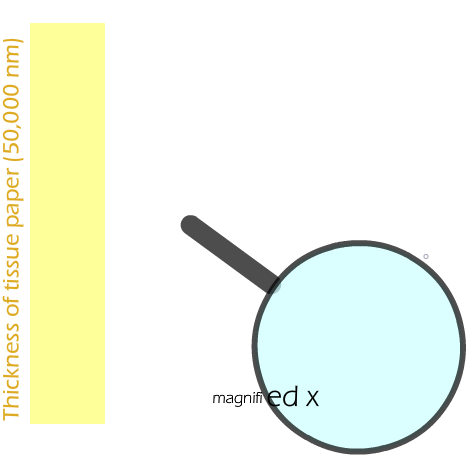Next stop... the nanoworld
Cells and bacteria belong in the microworld; organelles like the nucleus, mitochrion, and chloroplast just barely belong to the microworld. You can think of the cell as a microworld city, and the organelles as microworld-sized factories within that city. The machinery of the cell organelles, however, belong to the nanoworld. That includes the DNA that contains instructions and the enzymes that do the actual work, the food molecules like glucose to be metabolized, the membranes that keep the cell interior safe, and even the viruses that infect the cell. All of these are nano-sized.
So at the top of the nanoworld would be the smallest bacterium, measuring in at 1000nm. Visible light is somewhere in the middle -- between 340 and 780 nanometers. Below that are most viruses, including my favorite, the T4 (which looks like a lunar lander, and helps protect us against E. coli gone bad) and one on everyone's least favorite list, the HIV virus. At 100 nm, Chromosomes are about the size of small viruses, which makes sense considering that viruses are basically just DNA in a protective coat. Smaller than that are the enzymes, membranes, DNA strand, and at the very bottom, a glucose molecule, coming in very close to 1 nanometer.
Did you know … if you took all the blood veins in your body and lined them up end to end, you’d be dead.
What's a nanometer?
Click one of the buttons below to see how biological objects compare to the thickness of a piece of tissue paper (50,000nm).

Copyright University of Maryland, 2007
You may link to this site for educational purposes.
Please do not copy without permission
requests/questions/feedback email: mathbench@umd.edu